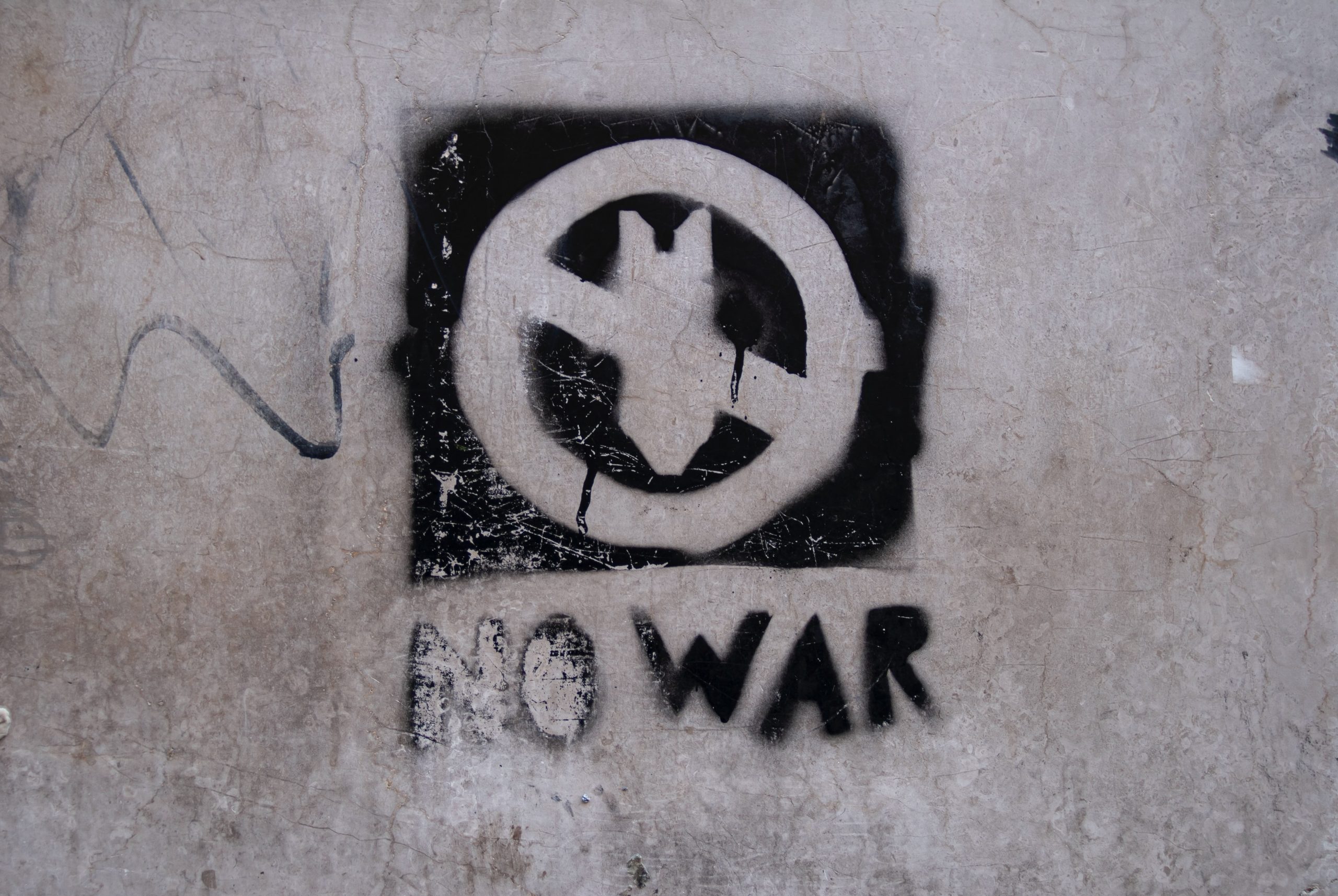Banning Nuclear Weapons - An Auspicious Start
Despite being shunned by the nine possessors of nuclear weapons and most of their allies, the first part of the negotiations mandated by the United Nations General Assembly on a legally binding instrument to prohibit nuclear weapons, leading towards their total elimination, ended on an optimistic tone. Delegations from 120-plus States will return to New York in mid-June to start discussing the draft treaty to be presented by the President of the Conference, Ambassador Elayne Whyte-Gomez of Costa Rica.
At the March Session there was wide convergence of views on the core prohibitions, such as stockpiling, use, deployment, acquisition, development and production of nuclear weapons. Broad support for prohibiting the hosting and transfer of such weapons was also noted. Questions remain on provisions related to verification of compliance, clauses for accession by nuclear-armed and other States, timelines for elimination of stockpiles and the relationship of the new instrument with existing treaties such as the Nuclear Non-Proliferation Treaty (NPT) and the Comprehensive Test Ban Treaty (CTBT), among others. These and other issues will need to be further discussed during the second Session.
Most of those who support these negotiations would probably agree that they will not bring about a sudden shift in the mindsets of the nine governments that threaten the rest of the world with the willingness to use the most cruel, indiscriminate and destructive weapon ever invented. It is undeniable, however, that even at this early stage of the negotiations public opinion in many countries have begun to pay attention to the potential impact of a prohibition treaty. Press articles and specialized publications have started to discuss the effects of a ban and its perceived advantages and shortcomings.
All States, without exception, support nuclear disarmament as a worthy and necessary objective. The mantra “a world without nuclear weapons” has become the stated and uncontroversial goal of the community of nations. The decision of the United Nations General Assembly to negotiate a treaty outlawing nuclear weapons has brought new impetus to debate on how to get rid of nuclear armament. Based on the experience of several decades of efforts to establish international norms on the abolition of weapons of mass destruction and on the conduct of States in armed conflict many authoritative voices in a number of countries highlight the need to avoid the unacceptable harm and destruction that would be caused by the use of nuclear weapons. As recorded in many international documents, the overwhelming majority of nations believe that the only way to prevent nuclear weapons to be used, by accident or design, is their complete elimination.
Opponents of a ban argue that such an agreement would impede or at least render more difficult efforts for reductions of atomic arsenals under the Treaty on the Non-proliferation of Nuclear Weapons (NPT) and that a treaty to which the current nuclear powers choose not to adhere would not bring about any tangible results in reducing or eliminating nuclear weapons. In their view, the very monstrosity inherent in the sheer possibility of use of those weapons is what makes them a powerful deterrent to aggression. They consider that negotiating a prohibition is premature and even counterproductive as it risks unraveling the disarmament architecture put together over the past decades. Supporters, for their part, contend that a ban treaty would establish a clear legal standard rejecting nuclear weapons on humanitarian grounds and would enable States to formalize such a rejection besides enhancing the stigma against those weapons. It would reaffirm their unacceptability and incompatibility with universally recognized principles of international law. The proposed ban, they point out, would reaffirm and strengthen commitments assumed under other treaties and would enhance, not detract from such commitments. They admit that it would not bring about an immediate abolition of nuclear weapons, but would set into motion a trend toward further specific agreements on nuclear disarmament that might attract States not yet convinced of the advantages of delegitimizing nuclear weapons and doctrines of nuclear deterrence. In fact, one of the major challenges for the universality and full effectiveness of a ban treaty is precisely how to design a mechanism that will ensure the possibility of late adherence by States currently under the “umbrella” of nuclear-armed allies and ultimately by the possessors themselves.
Before a treaty banning nuclear weapons can be praised as a major achievement or outright dismissed as a futile effort both sets of arguments will need to be checked against the results that it would in fact produce in the short, medium and long run. If the ban proves at least to be a positive ingredient to infuse life and energy into the moribund multilateral disarmament machinery or to create viable alternative, but not conflicting paths this will already be a worthwhile accomplishment. If not, it will simply fall into oblivion or at best remain as a monument to human fallibility.
The push for negotiations on a nuclear arms ban treaty grew out of years of mounting frustration over the lack of progress in efforts under the NPT regime. Whether or not parties to that instrument, possessors of nuclear weapons have displayed little or no inclination to fulfill the commitment enshrined in its Article VI, which requires all its Parties “to pursue negotiations in good faith on effective measures relating to cessation of the nuclear arms race at an early date and to nuclear disarmament”. Since the start of the atomic age, the proposed step-by-step method they favor has produced only measures to contain proliferation; none of such measures addresses nuclear disarmament proper. Unilateral decisions or bilateral agreements to reduce or limit existing stockpiles concluded over the past seven decades fail to contain binding commitments to eliminate such arsenals and are not subject to independent verification methods. For the past seventy years nuclear-weapon States and their allies have argued that although they agree on the desirability of nuclear disarmament as an ultimate objective, the conditions are not ripe for decisive steps in that direction. Political agreements on specific measures agreed in international forums have been constantly downgraded or reneged as soon as the ink dried on the relevant documents. Possessors are currently engaged in a new round of the nuclear arms race as they seek to enhance the destructive power, accuracy and range of their weapons. As a result, confidence in their real motives and intentions waned in recent years.
In the recent past, another powerful force helped to propel forward the drive to finalize a treaty banning nuclear weapons and brought this matter to the forefront of the preoccupations of a large majority of States. The collective conscience of humankind has increasingly taken to heart the unanimous concern expressed at the 2010 Review Conference of Parties to the NPT over the catastrophic consequences of nuclear detonations as well as the conclusions of three international Conferences held in 2013 and 2014 on such consequences. In the 2015 Review Conference of the Parties to the Treaty on the Non-proliferation of Nuclear Weapons a large majority of States supported a humanitarian pledge to “stigmatize, prohibit and eliminate” nuclear armament. Civil society organizations contributed studies and discussion forums that helped shape specific, realistic proposals.
The thrust of the movement to ban nuclear weapons is not directed against any State in particular, but against the inhuman nature of nuclear weapons themselves and their disastrous effects on populations and the environment. The movement does not advocate unilateral disarmament but rather good faith compliance with treaty commitments and with imperatives dictated by humanitarian international law and the universal principles of civilized behavior. Accordingly, it does not discriminate against “good” or “bad” possessors, whether these are States or non-State actors. The security of all nations and individuals is threatened by the very existence of the last remaining category of weapons of mass destruction not yet prohibited under international law. No country should be allowed to possess the means to annihilate whole populations and render the planet uninhabitable under the pretense that this would somehow protect their own security.
In his vote in the legal suit brought last year before the International Court of Justice by the Marshall Islands against the nine countries possessing nuclear weapons Judge Cançado Trindade stated: “A world with arsenals of nuclear weapons, like ours, is bound to destroy its past, dangerously threatens the present, and has no future at all. Nuclear weapons pave the way into nothingness”.
It is time for mankind as a whole to act decisively in defense of its own survival.
About the Author
Sergio Duarte is a former United Nations High Representative for Disarmament Affairs and a member of the Latin American Leadership Network.
This was originally written for the Nuclear Threat Initiative.
Disclaimer: The views expressed in this commentary are those of the author and do not necessarily reflect the official position of the Asia-Pacific Leadership Network or any of its members.
Image: Unsplash stock, Egor Myznik.



